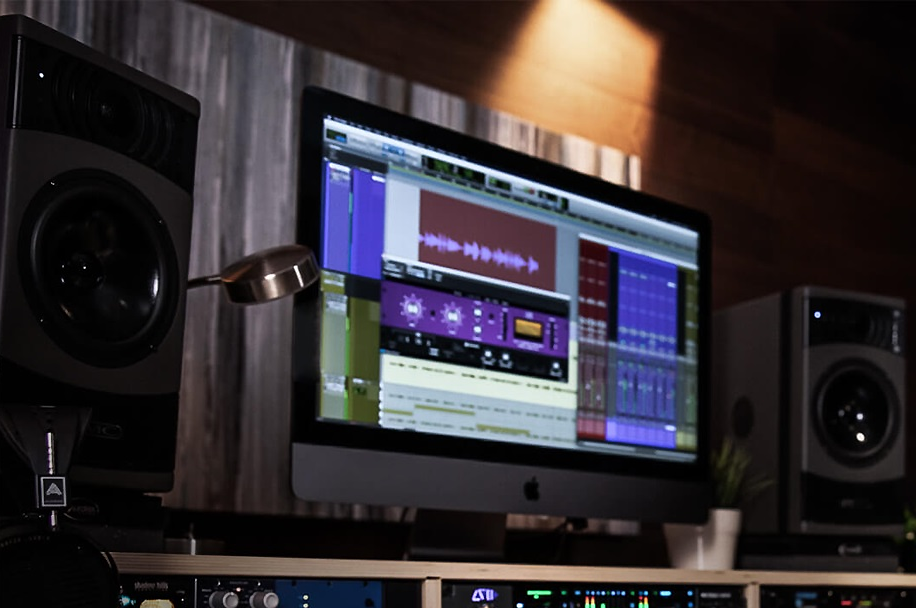.
There are a lot of things to focus on during a tracking session, especially when you’re recording a dozen or more inputs at once.
You want to make sure you’re getting a good sound from each microphone. That’s step one. Let’s be honest, you’ll spend the rest of your recording life perfecting step one…
For now, I want to focus on step two – getting good levels, both when you’re tracking and during mixing.
When I first started recording, I was taught that you want to get the level as close to peaking as humanly possible without going into the red. I would keep cranking up the mic pre on the snare drum mic until it was pixels away from clipping.
What happened? Everything clipped, of course. Apparently musicians play louder during the actual take than they do during sound check.
So I would turn the preamps down a little bit. Everything looked good, then BAM! More clipping.
I would keep turning down the preamps little by little until the clipping stopped. By this time, the musicians are tired of me coming over the talkback and saying, “Whoops! Sorry, that clipped. Let’s start again.”
Not a good scenario.
The reason people tend to think that you need to really “peg” the meters is leftover from the analog days. The harder you hit tape, the better the recording would sound. If you had lower levels, the tape noise would become much too audible.
Today, however, just about everyone is recording a 24-bit digital signal. Digital signals don’t sound better when you turn them up, they simply get louder.
If you record the same track really close to the clip light and then again with plenty of headroom, you won’t notice a difference in the quality of the signal, only the volume.
Analog equipment tends to saturate and add color the harder you drive it. Digital systems do not.
What does this mean?
If you’re recording at 24-bit (and you should be), you’ve got a whopping 144 dB of signal to work with. What does that mean? The noise floor of your system is significantly lower than on an analog system. In fact, the noise floor of a decent digital system is virtually non-existent.
Let’s say you record a snare drum in Pro Tools, and its loudest part is 6 dB below clipping. So, you technically could have recorded it 6 dB louder, but even 6 dB down you still have 138 dB of signal left in your system. You’re still WAY above the noise floor.
My suggestion? Give yourself some room to breathe! Rather than trying to make the signal get as close to the top of the meter as possible, have it max out somewhere between one-half and three-fourths of the way up the meter.
This way the drummer can do an awesomely loud fill without clipping every track in the session, and you won’t end up smacking your forehead every time the clip light goes off during and awesome take.
So, what about mixing, anyway? What was your biggest issue when you mixed your first song? I bet you a nickel it was getting the levels right.
You probably got halfway through the mixing process and suddenly several of your tracks are clipping, or your master fader is clipping.
So you turn the clipped tracks down a bit. Well now the mix doesn’t sound right, so you try to turn every other track down by the same amount. Still doesn’t sound right.
You go back to work, re-balancing everything. Before you know it, your tracks are clipping again.
You think to yourself, “Did I really turn these up that much again?” You slam your fists into your desk…or kick the dog…or yell at the cat…or maybe you do all of these at the same time.
Welcome to the world of mixing.
You’re not alone. This was my experience, and I bet (another nickel) that if you asked any experienced engineer, he’d share a similar story of his own frustrated journey.
My Advice
This is the part where I could go into a list of techniques for keeping track levels down to prevent clipping, but you know what? I’m not gonna do that.
Why? Because I think there is one single reason why people have such trouble with clipping during mixing. I’ll get to that in a second.
The first thing you can do to make your life easier as a mix engineer is to make sure you don’t record everything at a super-hot level. I talk about this in Setting Levels for Recording.
You don’t have to peg the meters to get a great-sounding recording. If you just get a decent level, you’ll be much better off when it comes time to mix.
Sometimes you don’t have control over the levels. Perhaps you’re only mixing the song, not recording it. If so, then you’re at the mercy of the recording engineer who recorded the tracks.
Okay, back to getting rid of all that nasty clipping on your tracks. My suggestion?
Turn up your monitors/headphones!
Seriously, this is the biggest reason I get clipping on my mixes, I keep the volume knob too low on my monitors and headphones.
Rather than turn up the monitor volume, I push up the track levels in my mix. That’s a recipe for failure. (It’s also a recipe that will produce more dog-kicking outbursts if you don’t fix it.)
Let’s say you’re mixing a rock tune, and you’re listening to just the drums. Before pushing the kick drum up to zero or (even worse) above zero, reach for the volume knob on your speakers or headphones instead.
You’ll be able to hear everything better, and your mixing levels will be well below clipping. Remember this next time you’re mixing. I bet (yet another nickel) it will help.





















